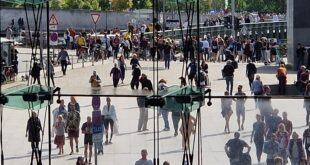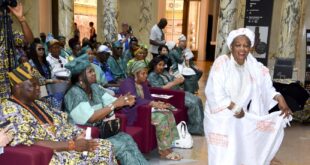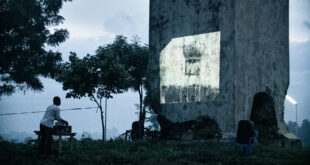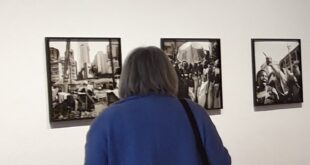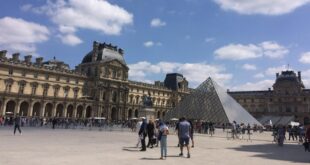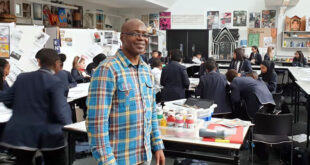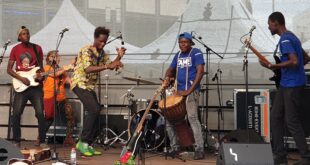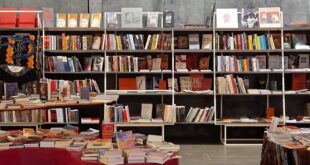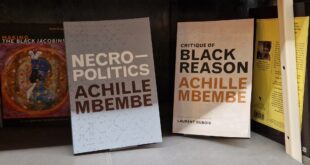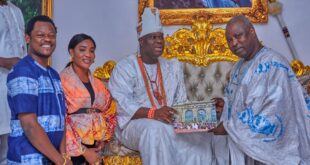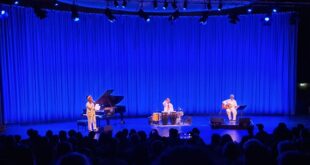By Manasseh C. Tazvinzwa
As many communities in contemporary Africa struggle to preserve themselves and their cultural identity, Zimbabwean Shona sculptors have over the years found stone sculpture to be an important way to make a cultural statement or to express their cultural identity.
Shona stone sculpture in Zimbabwe dates as far back as the 9th century, when The Great Zimbabwe was constructed in Masvingo, a city 400 kilometre south of Harare, the capital city. The Great Zimbabwe, which literally translated is house of stone, is the biggest stone monument in Africa after the pyramids in Egypt.
Evidence of stone carvings are found in the museum at the site. These include the famous fish eagle (hungwe), a bird that is found as a symbol on the Zimbabwean flag as well as on the country’s currency.
Shona stone sculpture in Zimbabwe narrates the lifestyle of Shona communities through the hand and chisel of the artist. You cannot miss these artefacts. They abound by the roadside on major highways. They are also found in parks and galleries in and around the country.
In cities, the artwork enhances the visual delights already at hand, and the sculptures are always available to tourists for collection as souvenirs. These are uniquely Shona sculptures in all shapes and sizes.
The works depict anything from animals to birds, human beings and the spirit world. It is important to note that the life of the Shona revolves around the African traditional religion, and, as such, they worship God through the ancestral spirits.
Tourists from Europe, Australia and the Americas all love this artwork because of its aesthetic value as well as its inherent beauty.
The most commonly used technique in stone sculpture involves a careful selection of the right stone as an important first step which can be either serpentine or soapstone. This is followed by the smoothing of all or part of the surface of the stone, with only a minimal amount of reshaping, and typically the etching into the surface of various features or images that are desired by the sculptor, and these are universally recognised and admired as representing sculpture.
Artists get ideas for their works from what they see and experience around them through the process of socialisation. Others say they get these images from their dreams and from visits by the ancestral spirits while meditating.
Therefore it is not wrong to interpret this art as very spiritual and that the sculptor communicates with his ancestors as he works.
Behind the success of this art form are veteran sculptors like Henry Munyaradzi, Moses Masaya, Edward Chiwawa, Joram Mariga, Bernard Takawira and his brother John Takawira and Bernard Matemera.
Works of these internationally acclaimed artists are found in major galleries in Zimbabwe and in other countries in the region.
In Europe most Shona sculpture is found among permanent collections at The Museum für Völkerkunde in Frankfurt, Germany, The Tabac Museum in Vienna, Austria; and in the United States of America one can admire them at the Phoenix Art Museum.
Shona stone sculpture exudes all sorts of moods from sorrow to happiness, thoughtfulness to joviality and mourning to celebration. It also oozes power and vitality and is a reflection of the everyday life of the Shona people.
It is important to add that Shona sculpture is the collective expression of the historic beliefs of the societies reproduced by the artist in a spiritual rationale or explanation of the workings of the real world.
An African man or woman is part of a larger plan linking the living and the dead, the visible and the invisible universe as well as the mortal or spiritual realm.
In most cases, the artist’s work speaks of sadness as a long-lasting experience and the short duration of happiness, of how sorrow remains with us while joy disappears quickly.
Authentic Shona sculpture in Zimbabwe is not a matter of income-generating objects but of art that performs a social role. The artist is a contributing member of society, an agent of social change and an architect of social thought and planning.
The sculptor is committed to making a social comment on any issue, for example politics, disease, drought or other problems and, through his art, suggests solutions. Because of its essential, though deceptive simplicity, the Shona stone sculpture style is much copied but never successfully duplicated.
But Zimbabwe’s original artwork has not been invulnerable to copy cats. This has brought about a new unconventional form of art which is now known as `airport art`. It is airport art because it is mass produced and highly commercialised artwork meant for sale to undiscerning tourists who are prepared to spend a few dollars saved from their safaris on African artefacts.
Because of the economic hardship prevailing in Zimbabwe, Shona sculpture has become a business venture that brings some form of income to many unemployed youths. This may be good as it encourages the youths to sustain themselves. On the other hand, this kind of mass production leaves the future of original Zimbabwean stone sculpture hanging in the balance.
——-
Mr Tazvinzwa is a contributing writer to The African Courier and he lives in London
 THE AFRICAN COURIER. Reporting Africa and its Diaspora! The African Courier is an international magazine published in Germany to report on Africa and the Diaspora African experience. The first issue of the bimonthly magazine appeared on the newsstands on 15 February 1998. The African Courier is a communication forum for European-African political, economic and cultural exchanges, and a voice for Africa in Europe.
THE AFRICAN COURIER. Reporting Africa and its Diaspora! The African Courier is an international magazine published in Germany to report on Africa and the Diaspora African experience. The first issue of the bimonthly magazine appeared on the newsstands on 15 February 1998. The African Courier is a communication forum for European-African political, economic and cultural exchanges, and a voice for Africa in Europe.


